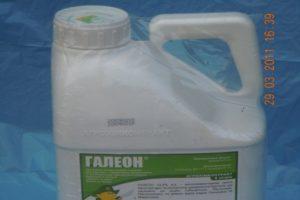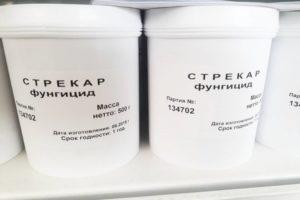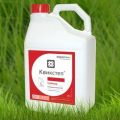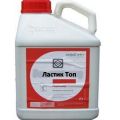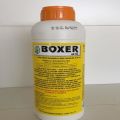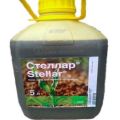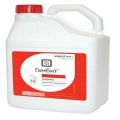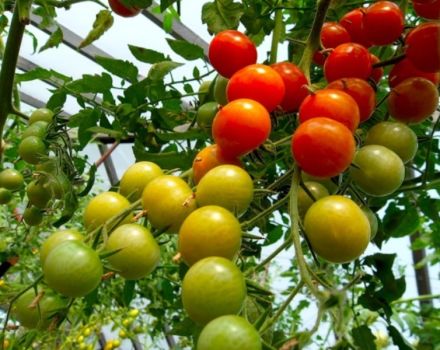Instructions for the use of Target herbicide, mechanism of action and consumption rates
Postemergence selective herbicide fights against weedy annual cereals and perennials in areas occupied by food and industrial crops. The use of the Target herbicide does not have strict terms, does not affect the crop rotation. The drug inhibits both the aboveground and the root part of the plant, and acts strongly in combination with other herbicides.
Content
- 1 Composition, form of release and purpose of Target Super herbicide
- 2 Mechanism and speed of action
- 3 Main pros and cons
- 4 Consumption rates
- 5 How to prepare a working solution and how to use it
- 6 Precautions
- 7 Toxicity degree
- 8 Compatibility with other pesticides
- 9 Terms and conditions of storage
- 10 Are there any analogues?
Composition, form of release and purpose of Target Super herbicide
Selective herbicide destroys sprouted annual cereals and perennials in areas occupied by beets, potatoes, flax, sunflowers.
The drug is available in the form of a concentrated emulsion poured into 10-liter canisters. The manufacturer is the Russian company Agro Expert Group. The active substance is quizalofop-P-ethyl. In the Target Super preparation, the component is at a concentration of 51.6 g / l, and in Target Hyper - 250 g / l.
Mechanism and speed of action
When in contact with the surface of the plant, the drug quickly penetrates into tissues, moves to growth points and roots. There, the synthesis of fatty acids is inhibited, as a result of which the new leaves turn yellow and dry out, the roots die off.
Of weed annuals, the following are sensitive to the effects of the herbicide:
- foxtail;
- bluegrass;
- bristle;
- wild oats;
- broom;
- bonfire;
- chaff;
- crabby.

Perennials susceptible to chemical attack:
- wheatgrass;
- cane;
- humay;
- bermuda herb.
The first signs of depression are noted after 1.5-2 weeks. Complete clearing of the area from weeds occurs after about 3 weeks.
Target protects cultivated vegetation from weeds that have already emerged at the time of processing.
The herbicide does not accumulate in the soil, does not inhibit the weeds that have grown after spraying.
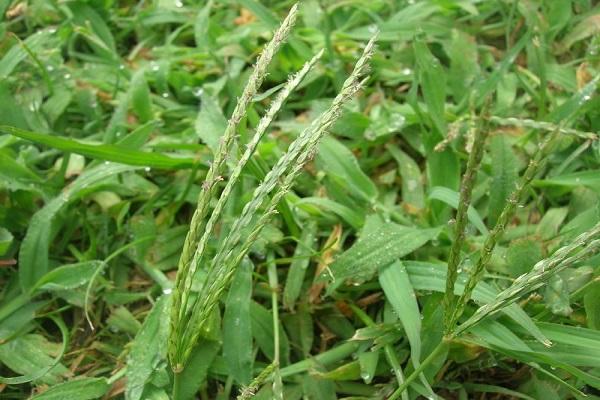
Main pros and cons
Herbicide Target is popular with farmers, as it has many advantages:
- highly effective against complex cereal species - wheatgrass, wild oats, Bermuda grass;
- oppresses both the green mass and the root part, which excludes plant recovery;
- does not affect crop rotation;
- acts quickly;
- combined with herbicides designed to combat dicotyledonous species;
- does not require adherence to strict processing times, depending on the stage of culture formation;
- does not cause resistance.
Farmers do not notice any particular disadvantages when using it.
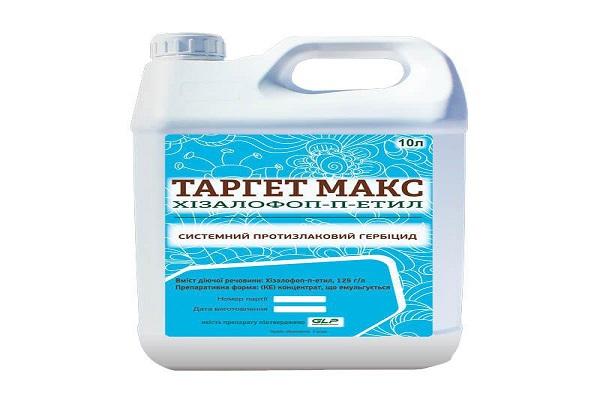
Consumption rates
The table shows the rates of use of the drug for the treatment of areas occupied by a certain cultivated species, and the timing of spraying.
| Consumption rate, l / ha | Cultural view | Weed vegetation | Processing time |
| 1-2 | beets, sunflower | annual cereals | weed stage 2-4 leaves |
| 2-3 | beets, sunflower | cereal perennials | weed height - 10-15 cm |
| 2-3 | linen | annual cereals and perennials | flax development stage "herringbone" (wheatgrass height - no more than 15 cm) |
| 2-4 | potatoes | annual cereals and perennials | stage of 2-4 leaves in an annual weed, the height of a perennial weed is 10-15 cm |
The waiting period for beets, potatoes and sunflower is 60 days, the frequency of spraying is 1. Consumption of working fluid is 200-300 liters per hectare.
How to prepare a working solution and how to use it
The tank of the spray device is filled with water to half its volume. Add the required amount of herbicide with the stirrer on. Add water to the edge of the tank while the mixer continues to work.
Stir the solution periodically during spraying to maintain uniformity. The instructions indicate that it is possible to spray overgrown weeds, but in this case, take the maximum allowable rate of herbicide consumption. If the cultivated area is heavily clogged or the stems of the cultivated species are close to each other, then the consumption rate must be increased.
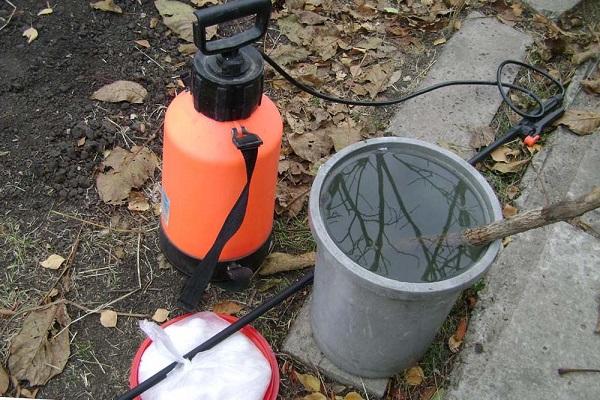
Precautions
When working with a herbicide, standard methods of protecting the skin and respiratory tract are used: respirator, rubber gloves, closed clothing.

Toxicity degree
The target belongs to the 3rd class of danger for the human body and bees - a low-hazard substance.
The active component of the herbicide is actively decomposed in the soil, after 2-3 weeks there is no trace of it.
Compatibility with other pesticides
For the treatment of beets, Target can be combined in a tank with chemicals designed to combat dicotyledonous weeds. For spraying flax, they make a complex with Agron herbicide.
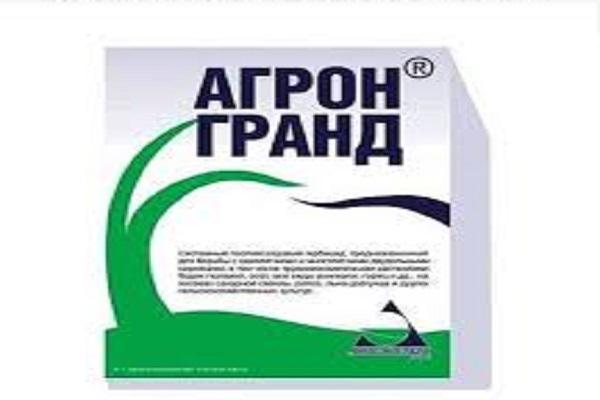
Terms and conditions of storage
The Target preparation is stored in a canister in a dry warehouse at temperatures from 0 to +30 ° C.
Shelf life is 2 years.
Are there any analogues?
Herbicide Target has many analogues in terms of active substance. The most popular are:
- Targa Super;
- Agrosan;
- Forward;
- Leopard;
- Miura.

Analogues are also produced in the form of a concentrated emulsion, are highly effective against common cereal species, quickly destroy both the aerial and root parts of the plant.
